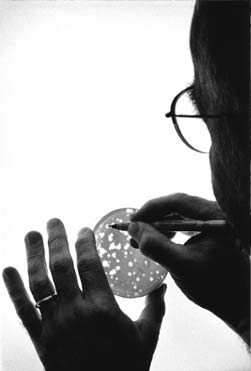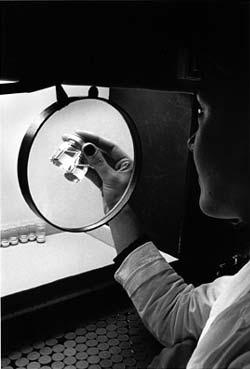
Polio, short for poliomyelitis, is an ancient disease, but researchers did not completely identify and name it until the 20th century. The most common evidence of polio paralysis – a withered leg -- is depicted in visual art dating back to ancient Egypt. In 1840, it was described clinically for the first time and called 'infantile paralysis' – because it primarily affected children. Austrian medical researchers determined in 1909 that polio was a contagious disease spread by a virus, which meant a vaccine against the disease was theoretically possible. In 1931, as epidemics grew in Europe and North America, British researchers identified the three strains of poliovirus, setting off a race to develop a vaccine.
Polio can only live in humans, a quality that makes eradication feasible. The virus enters the body through the mouth, breeds in the intestines and circulates in a population through faeces. Initial symptoms are much like a common cold and include fever, fatigue, headache, vomiting, stiffness in the neck and pain in the limbs. It is most contagious about 7 to 10 days before and after the onset of symptoms, which appear about one to three weeks after exposure.
While the virus can circulate widely, only about one in 200 infections lead to paralysis, usually in the legs. About 5 to 10 per cent of victims suffer paralysis of their breathing muscles, which can lead to death. To combat this, a breathing apparatus called the iron lung was developed in the 1930s. Its large metal cylinders became a common sight in hospital wards throughout North America.
Evidence shows that polio rates were probably equally high in both rich and poor nations. But in poor countries polio cases were masked by the high incidence of all diseases. In the industrialized world, the disease grew to prominence when it broke out in concentrated epidemics in the first half of the 20th century, at a time when public health officials were able to control other infectious diseases such as tuberculosis and cholera.
The onset of these epidemics lay, paradoxically, in better sanitation standards. When sanitation was poor, almost every child in polio-endemic regions became exposed soon after birth. Infants were less vulnerable to the virus due, in part, to antibodies from their mothers' breast milk; the initial exposure gave the baby immunity. But as sanitation standards improved, fewer people came in contact with polio as infants, upsetting the historical balance between virus and host.

© Sebastião Salgado
United States of America
A scientist examines magnified human cells that are damaged by poliovirus, at the Centers for Disease Control and Prevention in the city of Atlanta. The federal agency plays a lead role in analysing poliovirus strains from around the world.
As epidemics grew in the first half of the 20th century, polio became one of the most feared diseases in industrialized countries. The United States led the drive to find a vaccine, thanks in part to the personal commitment of President Franklin D. Roosevelt, who was paralysed in both legs by polio at the age of 39. With the President's critical backing, a fund-raising campaign across the U.S. – the March of Dimes -- helped finance the effort.
The two-decade quest bore fruit in the 1950s. In 1954, Dr. Jonas Salk introduced the first vaccine, inactivated polio vaccine (IPV), derived from a 'killed' virus. The success of mass trials that year caused an international sensation. Through immunization using this vaccine, the epidemics in North America quickly came to a halt. In 1957, another US researcher, Dr. Albert Sabin, introduced the oral polio vaccine (OPV), based on a weakened live virus. Following successful trials in the Soviet Union, OPV would go on to largely replace Salk's vaccine, first, in other industrialized countries, and then worldwide.
OPV is the vaccine of choice for the global eradication campaign. Delivered in drops that are swallowed, it is easier to administer than the needle-injected IPV. It is also cheaper to manufacture. In addition, while IPV protects individuals from the effects of polio, the virus can continue to live inside them for some time. OPV completely denies the virus a home by inducing immunity in the intestines, where it breeds.
But OPV is not risk-free. There is a remote chance (1: 2.5 million) that the vaccine will provoke paralysis. An even more remote possibility: the vaccine virus may become virulent, causing an outbreak in unvaccinated populations. Three documented incidents have caused several cases of paralysis. However, when these are compared to the billions of doses delivered, the overwhelming benefits of OPV far outweigh the rare risks.
For more science: > strategies

© Sebastião Salgado
France
Oral polio vaccine for the global campaign is produced at several international pharmaceutical laboratories, including this one at Aventis Pasteur in the town of Marcy l'Etoile, near Lyon.
 |